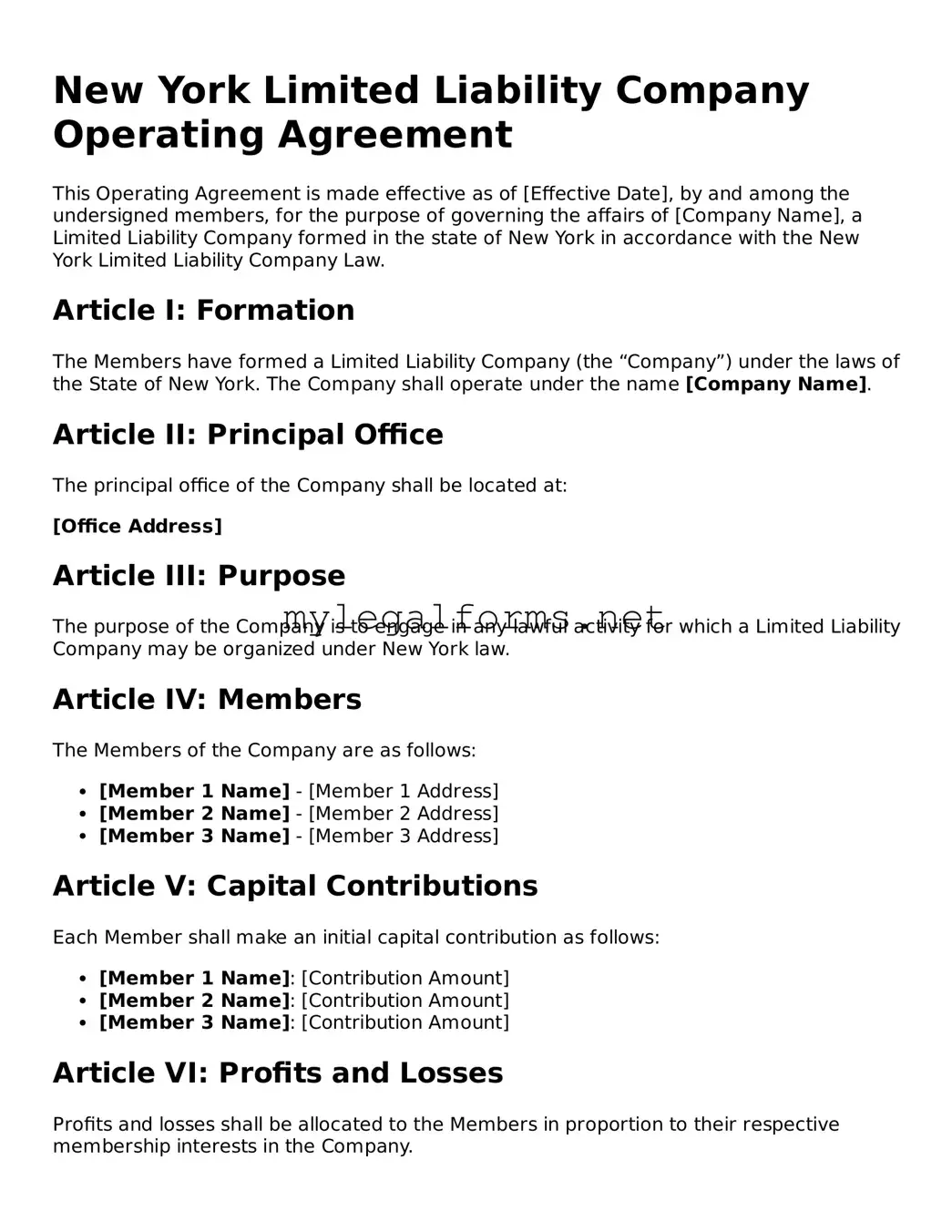New York Limited Liability Company Operating Agreement
This Operating Agreement is made effective as of [Effective Date], by and among the undersigned members, for the purpose of governing the affairs of [Company Name], a Limited Liability Company formed in the state of New York in accordance with the New York Limited Liability Company Law.
Article I: Formation
The Members have formed a Limited Liability Company (the “Company”) under the laws of the State of New York. The Company shall operate under the name [Company Name].
Article II: Principal Office
The principal office of the Company shall be located at:
[Office Address]
Article III: Purpose
The purpose of the Company is to engage in any lawful activity for which a Limited Liability Company may be organized under New York law.
Article IV: Members
The Members of the Company are as follows:
- [Member 1 Name] - [Member 1 Address]
- [Member 2 Name] - [Member 2 Address]
- [Member 3 Name] - [Member 3 Address]
Article V: Capital Contributions
Each Member shall make an initial capital contribution as follows:
- [Member 1 Name]: [Contribution Amount]
- [Member 2 Name]: [Contribution Amount]
- [Member 3 Name]: [Contribution Amount]
Article VI: Profits and Losses
Profits and losses shall be allocated to the Members in proportion to their respective membership interests in the Company.
Article VII: Management
The Company shall be managed by its Members. Decisions regarding the management of the Company shall be made by a majority vote of the Members.
Article VIII: Indemnification
The Company shall indemnify any Member or former Member for any act performed on behalf of the Company, to the fullest extent permitted by law.
Article IX: Amendment
This Operating Agreement may be amended only by a written agreement signed by all Members.
Article X: Governing Law
This Agreement shall be governed by and construed in accordance with the laws of the State of New York.
IN WITNESS WHEREOF, the Members have executed this Operating Agreement as of the day and year first above written.
Signatures:
Member 1 Signature: _______________________________ Date: ____________
Member 2 Signature: _______________________________ Date: ____________
Member 3 Signature: _______________________________ Date: ____________
